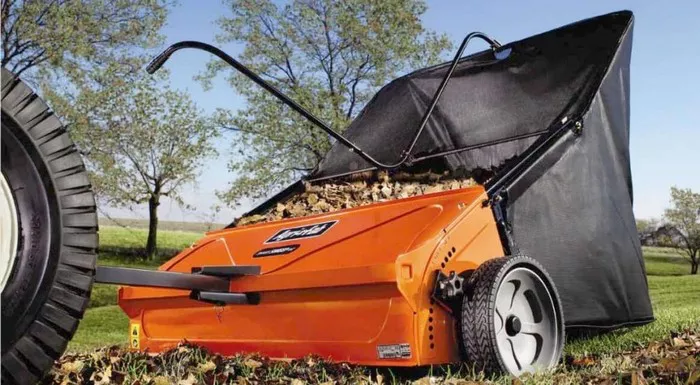Street sweepers play a crucial role in maintaining clean and safe urban environments. They help remove debris, litter, and pollutants from streets, which improves both the aesthetic appeal and overall cleanliness of a neighborhood. For residents, knowing when the street sweeper will come through their area can be essential for keeping their streets clear and clean. This article will provide a detailed guide on how to find out when the street sweeper comes in your area, including key factors that affect scheduling and practical tips for residents.
Understanding Street Sweeper Schedules
Street sweeper schedules can vary widely depending on the location, municipality, and specific needs of the area. Here’s a breakdown of how street sweeper schedules are typically determined and how you can find this information for your area.
Factors Affecting Street Sweeper Schedules
Several factors can influence when and how often street sweepers visit a neighborhood:
Local Regulations: Different cities and towns have varying regulations regarding street cleaning frequency. Some areas may have more frequent sweeping schedules, while others may have less frequent visits based on local needs and budget constraints.
Type of Area: Residential streets, commercial areas, and major roads may have different schedules. High-traffic areas or regions prone to higher levels of debris might be cleaned more often.
Seasonal Changes: Street sweeping schedules might change with the seasons. For example, during autumn, sweepers may focus more on removing fallen leaves, while in winter, they might address salt and sand from snow removal.
Special Events or Construction: Temporary changes to street sweeping schedules can occur due to special events, road construction, or other activities that may impact regular cleaning routines.
Finding Street Sweeper Schedules for Your Area
To determine when the street sweeper will come through your neighborhood, you can use several methods:
1. Check with Your Local Municipality
Your city or town’s public works department or municipal office is often the most reliable source for information about street sweeping schedules. Many municipalities have dedicated departments responsible for street maintenance and can provide you with the schedule for your area. You can contact them directly via phone, email, or through their official website.
2. Visit the Municipal Website
Most cities and towns have websites that include information about street maintenance and cleaning schedules. Look for sections related to public works, sanitation, or street cleaning. Some municipalities may provide interactive maps or downloadable schedules that detail when street sweepers will be in your area.
3. Review Local Ordinances and Notices
Local ordinances or community notices might provide information about street cleaning schedules. These can be found in community newsletters, local newspapers, or bulletin boards in public spaces. Additionally, some cities post street sweeping schedules on neighborhood association websites or social media pages.
4. Use Community Apps and Services
Several cities offer community apps or online services that provide real-time updates on street cleaning schedules. These apps might include features that alert residents about upcoming street sweeper visits, allowing you to plan accordingly. Check if your municipality has such a service available.
see also: What Are the Differences Between Different Pool Vacuum Heads?
Preparing for Street Sweeping
Once you know the schedule for street sweeping in your area, there are a few steps you can take to ensure that the process goes smoothly and to avoid any potential issues:
1. Move Vehicles Off the Street
One of the most important preparations is to move your vehicle off the street on the day of scheduled sweeping. Parking regulations often prohibit vehicles from being parked on the street during cleaning times. If vehicles are left on the street, it can impede the sweeper’s ability to clean effectively and might result in fines or tickets.
2. Avoid Placing Debris on the Street
Ensure that any household debris or yard waste is not placed on the street before the scheduled sweeping. Street sweepers are designed to collect loose debris, but large items or improperly placed waste might not be picked up. Place trash and recyclables in appropriate containers and follow local guidelines for waste disposal.
3. Follow Temporary Parking Restrictions
Many municipalities post temporary “No Parking” signs before street sweeping. These signs will indicate the date and time of the scheduled cleaning. Be sure to observe these restrictions and move your vehicle to avoid any inconvenience or fines.
4. Report Issues or Concerns
If you notice any issues with street cleaning, such as missed areas or repeated delays, report them to your local public works department. Providing feedback helps improve the efficiency of street cleaning services and ensures that issues are addressed promptly.
Conclusion
Knowing when the street sweeper comes through your area is essential for maintaining a clean and orderly neighborhood. By understanding the factors that influence street sweeper schedules and using the available resources to find out when cleaning will occur, you can better prepare for street sweeping days. Moving vehicles, avoiding placing debris on the street, and adhering to temporary parking restrictions will help ensure that street sweeping services are effective and that your neighborhood remains clean and safe.
By staying informed and following these guidelines, you contribute to a cleaner environment and help your local public works department provide efficient and effective street maintenance.

